The Elder Scrolls III: Morrowind Preview
We journey to Bethesda's offices to get the scoop on Morrowind's characters, construction kit, and more in this in-depth preview.
The Elder Scrolls series began in 1994 with the release of Arena, a role-playing game that won numerous awards for its depth and story. In 1996, The Elder Scrolls II: Daggerfall was released, and it also won many awards for its nonlinear story and enormous gameworld, in spite of serious bug complaints. After Daggerfall, two more games, Battlespire and Redguard, were released in the Elder Scrolls world, even though these games weren't part of the Elder Scrolls series. Now, four years after the release of Daggerfall, Bethesda is developing the next game in the series: Morrowind.
In the wake of recent successful story-based role-playing games such as Baldur's Gate and Planescape: Torment, as well as successful online games such as EverQuest and Asheron's Call, Morrowind seems to be swimming against the current. By ignoring the popularity of massively multiplayer gaming and choosing to base the exclusively single-player game on a completely nonlinear storyline, the developers are betting that the hordes of single-player gamers out there will find the freedom allowed by a nonlinear role-playing game appealing. To increase this appeal, the developers are throwing in cutting-edge graphics, a large and intricately detailed gameworld populated with thousands of nonplayer characters (NPCs) and monsters, and what might be the most powerful and user-friendly construction kit ever included in a game.
The developers are building the game to last. Beyond the cutting-edge graphics, the gameplay is virtually endless, and you can develop characters long after you have completed the main quests and storylines. In addition, the construction kit lets you easily create and modify quests, and you can build and add areas to the gameplay world to allow limitless adventuring. You can save these modifications in the form of plug-ins, which you can easily share with other players.
Morrowind is a province primarily inhabited by the Dunmer, or dark elves, in the world of Tamriel. The game takes place in the province on a large island called Vvardenfell, which has a giant volcano called Dagoth-Ur in its center. The island was originally settled by the dark elves but was taken over by the empire 400 years prior to the time the game takes place. In addition, the island has become more racially diverse since that time. Vvardenfell is currently in turmoil from various factions competing for control, including five ruling houses, numerous guilds, and a mysterious religious group. You can join guilds and factions if you choose, and you can rise through the ranks by providing services and completing quests. In addition, you may want to investigate a mysterious curse called the blight, which is creeping across the island and sucking the life out of the land itself.
The Construction Kit
The game begins as your character is dropped off on the island by a prison ship. The captors require that you run errands in exchange for your freedom. According to Todd Howard, Morrowind's project leader, the developers have purposely created the beginning of the game to give you the choice to follow the orders of your captors or disobey them and strike off on your own. This encouragement to explore other options and follow your own path is characteristic of the developers' devotion to nonlinear gameplay.
The playable area in the game is huge: It's about 50 times the size of the map in Redguard. Plus, it's more detailed. Unlike the enormous but somewhat bland world in Daggerfall, Morrowind's will be filled with interesting areas. Approximately 30 unique cities and villages will be scattered across the map, in addition to numerous underground dungeons and other unique areas, like the giant volcano in the center of the island.
The Morrowind interface is entirely window-based and fully customizable. Windows can be resized, moved, turned off, or made semitransparent according to your preference. At no point in the game is it necessary to leave the game screen, as you can access inventory, view character statistics, and manage spells through the onscreen windows. Game time will stop when you are reading dialog, making inventory changes, or viewing your character's statistics.
The level of detail and sheer size of the playable area that the development team wanted required a rethinking of the typical game-building process. Realizing that they couldn't use the parts and pieces of their previous games to build the game they wanted, the team built an entirely new game from the ground up. Rather than building areas one by one, however, they instead created a powerful construction kit to build each world area using modular parts. A unique architectural style was created for each distinct culture found in the game. The buildings in Morrowind are put together with an almost Lego-style arrangement of parts, all of which blend seamlessly together in the game. You can avoid repetition by customizing the buildings and interiors with additional details and objects such as barrels, vines, fireplaces, and furniture. You can position flags and signs and then script them to flap in the wind or swing on hinges, respectively.
This drag-and-drop toolkit lets the team quickly build out the map, which maintains a consistent visual theme throughout areas that are built and populated by the same races. Since the same construction kit that was used to create the primary game will be included on the CD, you will be able to build custom areas limited only by the space on your hard drive.
You can also create and modify landscape in the construction kit. The game includes eight basic landscape types, and the terrain editor can blend these types together to create smooth transitions between badlands and forest, sandy beaches and grasslands, or any combination of the various landscape types.
Nonplayer Characters
Once you build an area, you can customize it by placing NPCs, monsters, and items with the same simple drag-and-drop interface. You can script quests either into NPC dialog tags or through a more advanced script-editing system. The game itself is being built, tested, and balanced with the same editor that is included in the game. A straightforward plug-in manager will fuse player modifications and additions with the primary game. This plug-in manager will also let you quickly add and remove modifications to the game without disturbing the original game file.
While the construction kit sounds fairly simple, it gives you a remarkable amount of flexibility to make changes to the game. You can easily modify weapon statistics, tweak skills, and adjust spell effects to fit your preferences.
Although the game is nonlinear at heart, you can follow a series of primary quests, in addition to a large number of side quests. Many quests require information, and there are a number of ways to obtain information from NPCs. Most of the NPC dialog in the game will be conveyed to you through text, but occasional spoken dialog (in WAV format) will be present to provide ambience. The character animations automatically synchronize with any WAV file to simulate speaking motions, which lets you easily add, if you desire, spoken dialog to your custom NPCs.
The NPCs you will encounter in the game are regulated by their disposition toward you. A high disposition means that they like and respect you, while a low disposition indicates dislike or distrust. NPCs with a high disposition toward you are more likely to share important information with you. You can alter their disposition through your appearance, actions, or persuasion.
NPCs are affected by your appearance and clothing, so a simple way to gain trust is to purchase (or steal) better clothes and armor. Many NPCs also have quests for you to complete, and completing a quest for an NPC will raise their disposition toward you. The persuasion options are another way you can try to influence a particular NPC. You can "admire" the NPC by using flattery to gain trust. The "intimidate" option uses threats to gain information, but it results in a lower disposition the next time you encounter that NPC. A "taunt" encourages an NPC to attack or attempts to persuade a fleeing opponent to stand and fight. Taunts also lower the disposition of the character in question.
In addition to disposition, NPCs have personality attributes, including aggressiveness and a tendency to flee or call for help. Fighters in general will have a higher aggressiveness because of their confidence and skill in battle, while merchants will have high flee and alarm ratings. When an alarm is sounded, nearby guards will come to investigate.
You can create every NPC with the same system used in creating the player characters, which means NPCs have skills, attributes, and levels. While most NPCs will remain at a specific level and skill rank to maintain the game balance, you can also script them to advance in level and skill ranks as the game progresses. Although Morrowind is not a party-based role-playing game, some helpful NPCs and pack animals will be able to accompany you for short periods of time to help guide you to a specific location or to aid you in a battle.
Combat and Graphics
Bethesda describes Morrowind's combat as a combination of the combat systems found in Daggerfall, Jedi Knight, and Thief. Combat occurs in real time and involves three basic attacks: the thrust, the chop, and the slash. You can choose these attacks through footwork - stepping forward while you attack will cause the character to thrust, and stepping sideways will cause the character to slash. Each weapon type has its own strengths, so thrusting with a spear will do far more damage than chopping with a spear. Characters that are holding shields will have a chance to block attacks. For greater damage, the game includes some form of location-specific damage, such as head shots. A character's skill with a particular weapon will determine the "to hit" percentage, while a governing attribute like strength will determine the damage caused by a successful hit.
In retaliation against the view that only action gamers get high-quality 3D-accelerated graphics, Bethesda is focusing on giving Morrowind cutting-edge graphics. Because of the very high polygon counts in both the characters and the environment, the game's graphics performance depends primarily on the video card. Bethesda says that even though the game will run on lower-end cards, the game is being designed for cards that support T&L technology. The character, monster, and NPC models each have around 6,000 polygons, so it is easy to see how multiple creatures and a detailed environment can add up and overwhelm a less powerful video card. For an added level of realism, the game will also feature perspective-corrected projected shadowing for creatures and characters.
By concentrating on high-end graphics, Bethesda will give role-playing fans a game visually equal to any first-person shooter, as well as one with more longevity. The developers are confident that the rate of video card advancement will continue to reduce prices; thus, the majority of gamers will be able to afford a video card capable of running the game within the coming years.
The environmental effects in the game are impressive. A realistic sun-and-moon cycle (complete with two moons) graphically depicts the passage of time, while weather effects, including clouds, wind, rain, and ash storms, dynamically interact with the characters. This interaction reduces visibility and causes movement penalties.
The characters and monsters in the game are also extremely detailed. Visual differences between the races, including skin tone, facial features, height, and weight are subtly modeled. Armor and clothes conform to the shape of the underlying skeletal model and move realistically with the character. The interchangeability of these items among characters of different races and shapes has been a challenge for the designers - every wearable item they create must work smoothly not only with every race and gender, but also with every other item. For the player, the benefit of this hard work is that you will have the inherent ability to pick up any item and use it, regardless of class, race, or gender. Despite the difficulty of ensuring universal compatibility, Bethesda promises to include as many weapons, armor types, and items as it can fit into the game. And while Morrowind was originally designed for a first-person view, the developers will most likely include a third-person view to appease those gamers that prefer to see their character (and all their fancy equipment) onscreen.
Character Classes and Skills
Characters are defined by eight basic attributes: strength, intelligence, willpower, agility, speed, endurance, personality, and luck, as well as five major and five minor skills. You can automatically increase your character's skills through repetition, while you can increase your attributes over the course of the game with the points that you gain when you advance in character level.
The skills are separated into stealth, combat, and magic groups of nine skills each for a total of 27 skills. Every skill has a governing attribute (the attribute most responsible for success in that particular skill) and a method by which the skill is increased. The "medium armor" skill, for instance, is governed by endurance, and you can increase it by being hit in combat while you're wearing armor. There are other ways that you can increase skills beyond their designated action; for instance, reading books on any particular subject can improve a character's skill.
Character classes have five major and five minor skills from a combination of these groups. You can create custom character classes as well choose skills from the three groups.
One common complaint about Daggerfall was that the classes were uneven, which gave fighters and magic users an advantage over thieves. The developers are trying to address this complaint by carefully balancing the three sets of skills and only allowing an increase in levels by increasing the characters' primary skills. You can increase secondary skills as well, but they do not count toward level advancement; therefore, they do not contribute to the increase of the characters' attributes. Artificial class-based restrictions are nonexistent: Since every character has every skill, magic users can use swords and wear armor, albeit ineffectively; and fighters can use magic items, but with a very low chance of success. If magic users wanted to wear armor, they could do so and increase their skill slowly; and they would eventually arrive at a point in which they could use it effectively. The developers felt that this system allows players more freedom to play their characters as they choose and to still maintain a useful balance between classes and skills.
Magic and Potions
Morrowind will let you create your own spells, potions, and magic items. You can create them as plug-in modifications to the game; or if you have advanced alchemy or magic skills, you can build them within the game.
The spells are based on around 200 basic spell effects. You can combine and scale these effects to produce custom spells and magical items, both in the construction kit and within the game. Each spell has a unique particle effect that provides a visual clue to the type of magic it uses. You will scale these visual effects according to the power of the spell so that a 50-point fireball will be ten times larger than a five-point fireball. The developers are still working on the methods of blending multiple particle effects for spells that use two or more types of magic.
One element of the game that is particularly detailed is the creation and use of potions. Any character can create a potion with the correct ingredients and apparatus; a high alchemy skill increases a character's chance of brewing a useful potion without dangerous side effects.
You can find a wide variety of ingredients in the world, both in the wild and in shops. Each ingredient has a number of effects, some beneficial and some harmful. Eating an ingredient without mixing it into a potion will have a small effect on the consumer. Characters skilled in alchemy will have knowledge of the effects of the ingredients, while unskilled characters will have to rely on guesswork to concoct a potion with the intended effects.
Each ingredient requires an apparatus to reduce it to its mixable form. Apparatuses include mortar and pestles, calcinators, alembics, and retorts. The quality and craftsmanship of these items have a direct effect on the potency of the resulting potion, so devoted alchemists will always be looking to upgrade their equipment.
Once the alchemists have obtained the ingredients and necessary apparatus, they must decide which ingredients are necessary for the desired effect. A potion must contain at least two ingredients with the same effect in order to generate any potency. Since many ingredients have harmful effects as well, balancing the recipe to double the beneficial effects and not the harmful effects can be tricky. Creating a potion that restores fatigue and drains intelligence can be counterproductive.
The Inhabitants
You will encounter approximately a 50/50 mix of NPCs and monsters during your adventures. In addition to more than 50 types of monsters, the province of Morrowind contains a number of different races, each with unique starting levels and powers:
Redguard: This dark race is naturally suited for battle. It is skilled with many types of weapons and has above-average endurance and speed.
Breton: This race has high intelligence and willpower and is particularly suited to use magic. In addition to its skill in sorcery, it has a natural resistance to spells.
Nord: This tall, light-haired race has great strength and is skilled in battle. It has a natural resistance to both natural and magical cold.
High Elf: This race is notable for its golden skin and is blessed with high intelligence, willpower, and agility. It has less spell resistance than the Breton race but is more resistant to disease.
Dark Elf: It is known for its strength, intelligence, and speed. This race is skilled with both magic and weapons.
Wood Elf: The agility and speed of this mischievous race gives it a natural inclination toward thievery. It is also particularly skilled in archery.
Imperial: This sophisticated race is known for its education, manners, and highly disciplined armies.
Argonian: This amphibious reptilian race is blessed with intelligence, speed, and agility. It is predisposed toward sorcery and thievery.
Khajiit: Some members of this feline race have catlike features. It has unmatched agility and is naturally suited to becoming thieves.
Bethesda has definitely set a high standard for itself to achieve. Fans of Daggerfall have been waiting four long years for a sequel, and from what we have seen of Morrowind, it will be worth waiting another year. Well aware of the danger involved in releasing another bug-ridden game, the developers have hired a full-time bug hunter to find and eliminate potential problems in the game throughout the development process. Bethesda is confident that its method of building the world in Morrowind will result in a more stable game. It's hoping the intricate level of detail and complexity of the world will attract both fans of the previous Elder Scrolls games as well as gamers who are new to the series.
The inclusion of such a powerful construction kit on the CD is a testament to Bethesda's confidence that the player community will rally around Morrowind and help the game evolve and grow. The game is still more than a year from completion, and the developers are currently creating a number of critical parts. Until a more complete build is available, it is difficult to determine if Morrowind will live up to the Elder Scrolls legacy, but the progress so far looks quite promising.
Got a news tip or want to contact us directly? Email news@gamespot.com
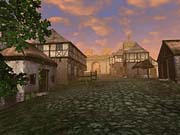
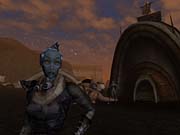
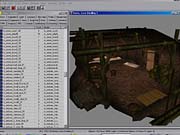
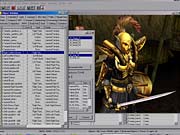
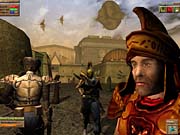
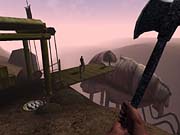
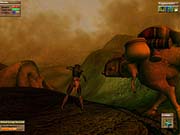
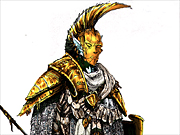
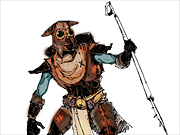
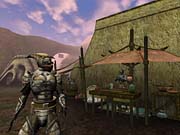
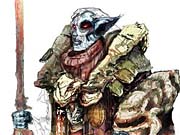
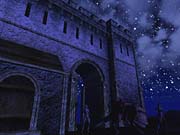
Join the conversation